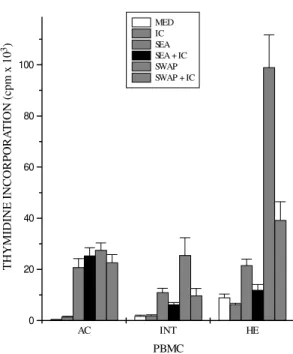Role of Immune Complexes from Pacients with Different Clinical Forms of Schistosomiasis in the Modulation of In Vitro Granuloma Reaction
Texto
Imagem



Documentos relacionados
The role of different cytokines in the peripheral blood mononuclear cell (PBMC) proliferative response and in in vitro granuloma forma- tion was evaluated in a cross-sectional
Ursolic acid; five lupane type triterpenes: betulin, betulinic acid, lupenone, 3ß-hydroxylup-20(29)-ene-27,28-dioic acid, and 2 α ,3ß-dihydroxylup-20(29)-ene-27,28-dioic acid, and
In view of the explained above, we decided to examine the synthesis of b-selanylcarbonyl compounds via reaction of benzeneselenol, generated in situ by reaction of diphenyl
The findings of the present study are in accordance with the in silico study and demonstrates that natamycin and nystatin are more potent antileishmanial agents than
NE formulations (F1, F2, F3, F4, and F2-Lp) were prepared using emulsion phase inversion (EPI) method and characterized in relation to droplet size, size distribution (PDI), zeta
Using an in vitro model of granuloma reaction, we show that immune complexes (IC) isolated from sera of INT patients are able to reduce granulomatous reaction developed by
Using an in vitro model of granuloma formation, we have shown that immune complexes (IC) isolated from sera of chronic intestinal schistosomiasis pa- tients were able to
Further, the immune rec- ognition of rSVLBP in human sera from individuals from schistosomiasis japonica endemic regions confirms that the rSVLBP can elicit an immune response